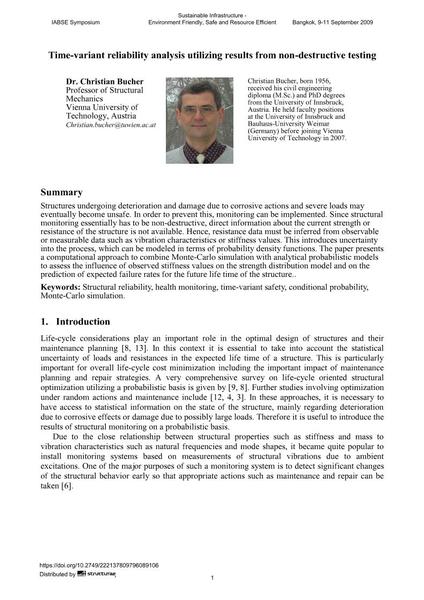Time-variant reliability analysis utilizing results from non-destructive testing

|
|
|||||||||||
Bibliographic Details
| Author(s): |
Christian Bucher
|
||||
|---|---|---|---|---|---|
| Medium: | conference paper | ||||
| Language(s): | English | ||||
| Conference: | IABSE Symposium: Sustainable Infrastructure - Environment Friendly, Safe and Resource Efficient, Bangkok, Thailand, 9-11 September 2009 | ||||
| Published in: | IABSE Symposium Bangkok 2009 | ||||
|
|||||
| Page(s): | 123-135 | ||||
| Total no. of pages: | 11 | ||||
| Year: | 2009 | ||||
| DOI: | 10.2749/222137809796089106 | ||||
| Abstract: |
Structures undergoing deterioration and damage due to corrosive actions and severe loads may eventually become unsafe. In order to prevent this, monitoring can be implemented. Since structural monitoring essentially has to be non-destructive, direct information about the current strength or resistance of the structure is not available. Hence, resistance data must be inferred from observable or measurable data such as vibration characteristics or stiffness values. This introduces uncertainty into the process, which can be modeled in terms of probability density functions. The paper presents a computational approach to combine Monte-Carlo simulation with analytical probabilistic models to assess the influence of observed stiffness values on the strength distribution model and on the prediction of expected failure rates for the future life time of the structure.. |
||||
| Keywords: |
health monitoring structural reliability Monte-Carlo simulation time-variant safety conditional probability
|
||||
